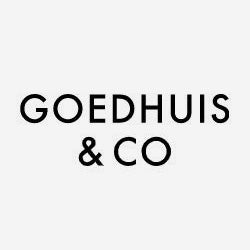
During our last Burgundy trip, I had the privilege of visiting a lesser known wine region of France – the Jura – which is located in the eastern part of the country, south of Alsace and north of Savoie. I have long known about the region. People from far and wide have recounted endless tales of its beauty, food (this is land of Comté) and its distinctive styles of wine.
Unlike other regions where oxidative styles in white wine would be considered a fault, here it is an art. It is in this region where the world’s first oxidative wines were produced and its recipe travelled further south to the Jerez region in Spain. In the Jura, Vin Jaune is their vedette. The uniqueness of this wine is that it is vinified dry and aged in barrel for 6 years. During this time, a layer of yeast forms protecting it from the harsher elements so that it can gently oxidise in a controlled manner becoming round, silky and complex. Think Fino Sherry yet without all the additional alcohol. In addition to Vin Jaune, they also produce other less aged (yet still oxidative) styles which fall under the appellation Côtes du Jura.
“˜But on earth would I drink with these types of wines?’ you ask. Comté and walnuts work wonders but they also pair very well with poultry in cream sauces, morel mushrooms and is particularly delicious with curry! I had a crème brûlée made with Vin Jaune that was to die for which also work superbly well.
Oxidative wines are not the only ones produced, though. Chardonnay is present in mostly crisp, fresh styled wines as well as Savagnin, an indigeous local variety. Related to the Traminer grape (as in Gewurtztraminer), when produced reductively, it creates wines that are aromatic, peachy and floral. Add a bit of controlled oxidation, however, and they turn nutty and buttery with subtle tones of cut straw and dried fruit. Yet despite their aromatic richness, they still remain wonderfully fresh. It is only this variety that is allowed to produce Vin Jaune.
I visited two producers – Berthet Bondet in Château Chalon and Stéphane Tissot in Arbois. Château Chalon may be perhaps the most beautiful village in the Jura. Medieval and stone-based in origin, it is dramatically perched above the valley floor. The vineyards which linger outside this picturesque village make the most famous Vin Jaune. Due to its excellent terroir, Château Chalon is considered a “˜cru’ within the region.
A traditional domaine, Berthet Bondet has been making wine since 1985. They produce multiple types of wines including a delicious sparkling wine, fresh, reductive styled wines, the Côtes de Jura “˜non-ullaged’ styles (as they call it) which is like Vin Jaune but aged for only 3 years and Vin Jaune itself. In addition to these dry styles, they produce a superb Vin de Paille, a dessert wine produced from dried grapes that have been pressed and vinified (like Italy’s Vin Santo but not as heavy), as well as Macvin du Jura, a “˜mistel’ wine that has the local “˜marc’ (brandy) added to sweet grape juice.
Slightly less traditional is Stéphane Tissot. Dynamic and brimming with energy, he produces around 18 different wines – of which at least ½ are produced reductively – that is with all the primal fruit intact. He farms his vines using organic and biodynamic methods and adds little or no sulphur at bottling – “˜natural’ winemaking at its best. His packaging is smart with clear, stylish labels and nicely shaped bottles, which remain nonetheless traditional. His overall mantra makes his wines very popular on the export market – 45% of his production is found in another country – significantly higher than the 3-4% for the overall region.
All in all, I found the Jura an absolute delight to visit. Though we do not normally stock wines from the region, if you are interested in discovering these unique bottles, we could no doubt could muster up a case or two.

 Written By
Written By